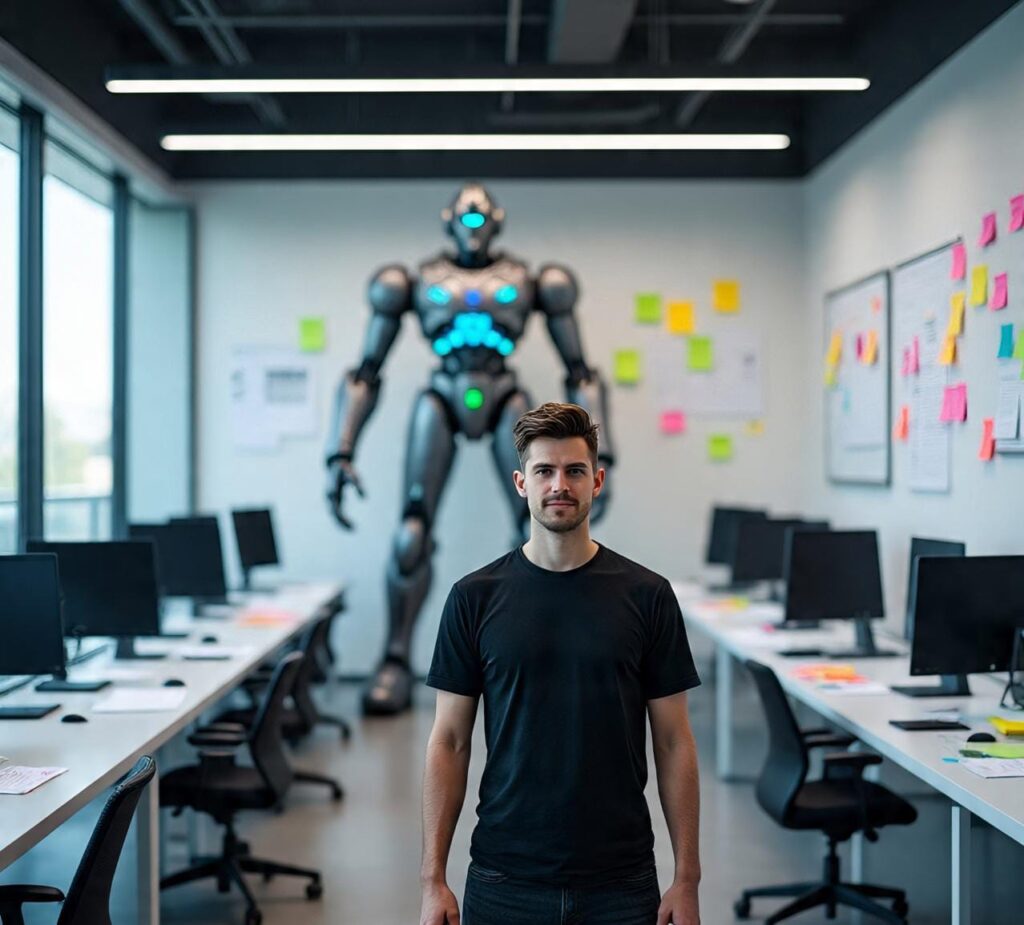
It is estimated that Earth is the base for over 10,000 AI startups, surpassing the population of cheetahs and dawn redwoods. While this number fluctuates due to the dynamic nature of startups, more than 2,000 of them secured initial funding last year. As investment in AI continues to surge, it raises the question: What exactly are these burgeoning entities up to?
To gain insight, I endeavored to engage with numerous recent AI founders. Instead of predicting success stories, my aim was to delve into their experiences of developing AI products firsthand—how AI tools have transformed their work processes and the challenges of navigating a competitive landscape. The environment resembled a precarious dance on the scorching surface of the sun as developments like OpenAI updates could spell doom for multiple startups in an instant.
This era might witness many engineers getting burned in this revolution; not all startups will weather the storm as they operate as experiments, and most experiments tend to fail. Nevertheless, by conducting numerous such experiments across the economic terrain, valuable insights into the near future may be gleaned.
Take Navvye Anand, a co-founder at Bindwell, for instance. During our video call, he exuded a half-smile and spoke with an air of sophistication while elaborating on his work involving custom AI models for pesticide development. Despite his youthful age of 19, Anand’s venture focuses on applying AI principles from drug discovery to enhancing crop yield.
Anand’s journey began in India where he immersed himself in Hacker News alongside his father while honing his skills in building sophisticated language models during high school. Before graduating, he and his now-18-year-old co-founder, along with two other friends from a summer camp, authored a paper published on bioRxiv detailing an LLM designed to predict protein behavior aspects. This venture led them to explore protein-based pesticides after securing funding from a venture capitalist who offered $750,000 for them to dedicate their efforts full-time towards their startup.
Months down the line, Anand and his partner established their first biological testing lab in the San Francisco Bay Area before relocating to another site where they actively engage in experimentation to create effective protein-based compounds that target pests without harming beneficial organisms like earthworms or bees. Anand’s journey into wet lab procedures was facilitated by hiring a friend who coached him through basic biochemical assays during the summer.
The unraveling narrative of these teenage entrepreneurs highlights their rapid progress in developing innovative solutions despite lacking prior experience in agribusiness—a feat that appeared impressive upon closer scrutiny. The transformative impact of AI tools on their entrepreneurial endeavors was more profound than initially anticipated, prompting further exploration during subsequent interviews with other budding ventures like Roundabout Technologies.
Collin Barnwell from Roundabout Technologies shared how they harnessed AI tools to propel their real-time vision system designed to optimize traffic light operations—a critical aspect given the substantial time wasted at red lights on deserted roads across the globe. The team’s achievements since inception underscored the accelerated pace enabled by AI tools—from training vision networks and conducting city research using LLMs to engineering hardware components—ushering them towards cutting-edge innovation.
Moreover, insights from founders like Justin Lee and Linus Talacko shed light on their transition from working at a medical startup in Australia to founding Den—a platform enabling users to interact with an intern bot via Slack for task automation. Their journey reflected the evolving landscape of human-AI interaction dynamics and highlighted challenges faced in aligning user expectations with functional design elements.
As these narratives unfolded, a common theme emerged among founders who acknowledged a paradigm shift catalyzed by AI tools—where once laborious coding tasks now condensed into shorter timeframes allowing for swift product iterations and experimentation. The evolution towards more strategic decision-making encapsulated within a framework of taste underscored how aesthetic sensibilities drive product design in tandem with technological proficiency—a sentiment echoed by Paul Graham’s seminal discourse on “Taste for Makers.”
The interplay between technological advancement and creative expression became evident in ventures like Weave Robotics’ Isaac—a home robot resembling an 18th-century villager aiding with household chores—and K-Scale Labs’ K-bot featuring humanoid aesthetics engaged in diverse applications ranging from laundry folding to construction projects powered by open source robotics technology.
Furthermore, visionary endeavors aiming to elevate humanity’s technological prowess akin to achieving Type 1 civilization status based on Nikolai Kardashev’s scale underscored grand ambitions fueling startups like K-Scale Labs seeking societal transformation through affordable robotics solutions.
In conclusion, as startups navigate uncharted territories fueled by AI innovations transcending traditional boundaries, one thing remains certain—the relentless pursuit of excellence guided by taste will continue shaping our collective trajectory towards a future enriched by technological ingenuity and creative exploration beyond conventional norms.
